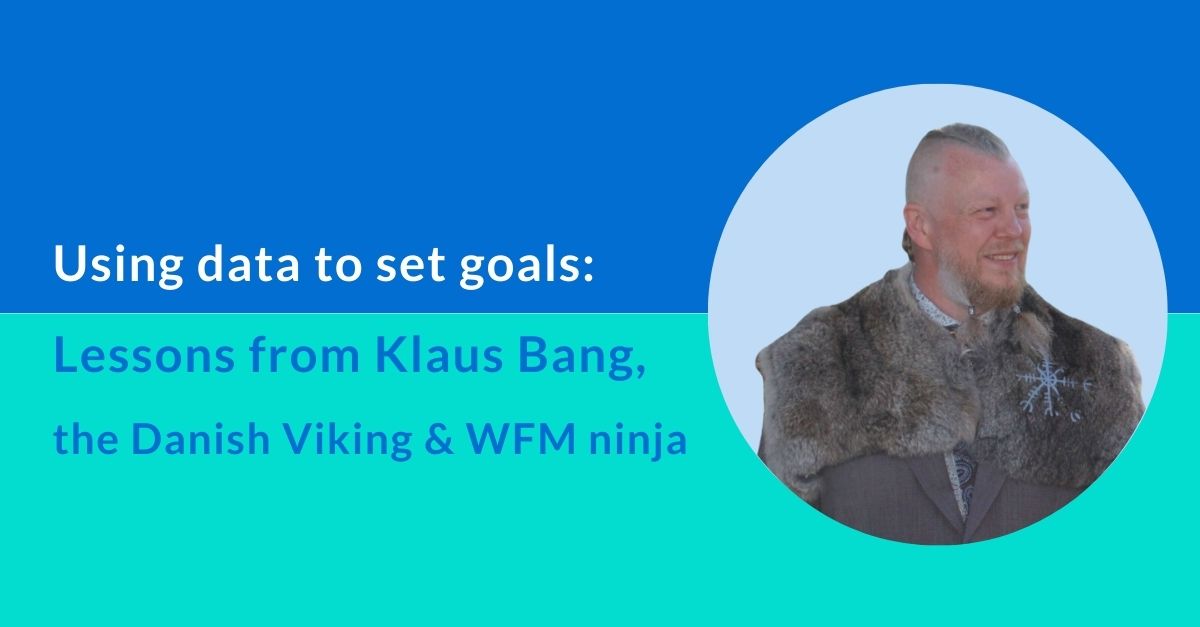- Products
- Solutions
Solutions
Services
- Resources
- Customers
Explore CSCCalabrio Success Center
Calabrio product training
- Partners
Workforce Engagement Management
Find More Great Content- Customer Interaction Analytics
- Workforce Management
- Customer Experience
- Quality Management
- Contact Center Reporting
- Managing a Remote Workforce
Home » Workforce Engagement Management
A Guide to Workforce Engagement Management
As a contact center leader, you’re familiar with the term “workforce optimization” (WFO). After all, it’s an established product category, a topic often discussed and disseminated by industry analysts and other customer experience influencers.
But what you may not know is that WFO is giving way to a new, up-and-coming application, one widely touted as “the next generation of WFO”: workforce engagement management (WEM).
Workforce engagement management augments WFO features with additional, agent-centered offerings—such as Voice-of-the-Employee (VoE) and agent assistance tools—that help organizations elevate and sustain the customer experience. The additional offerings are designed specifically to:
1
Decrease Agent Attrition
2
Arm agents with the tools they need to best serve customers
3
Align customers with the specific agents—based upon the agents’ subject matter expertise, personality profile, etc.
4
Add soft benefits, such as agent value, agent flexibility, etc.
These advancements help companies more easily, efficiently overcome rising competitive threats, talent shortages and shrinking agent tenures. With the enhanced customer and employee experiences, increased productivity and improved efficiencies WEM delivers to the contact center, it’s clear WEM is here to stay. In fact, Gartner warns those companies that don’t focus on WEM “will struggle to meet customer experience objectives due to the reduced caliber and engagement level of employees prepared to work in their operationally focused environment.
Shifting from WFO to WEM: What Changes?
Here are a few key ways companies can build upon existing WFO strategies to realize the benefits of WEM:
Leverage analytics to shorten employee feedback loop
Traditionally, only flagged contact center interactions and a handful of at-random interactions were reviewed as part of agent evaluations. But evaluating an agent based solely on their worst calls paints an incomplete picture. It also leads to a heavy focus on the weakest agents, leaving stronger agents—those most valuable to the contact center—with little to no feedback on their own opportunities for improvement.
Modern analytics tools support employee engagement by digesting data from all of an agent’s interactions, revealing comprehensive trends that provide more accurate insights into the agent’s strengths and weaknesses. Managers can provide ongoing feedback to every agent—including top performers—to help ensure all contact center agents move forward in their skill development and performance.
In addition, WEM makes timely feedback a reality. Agents crave feedback, and research shows consistent performance reviews increase agent engagement. With WEM, agents see evaluations soon after managers complete them— much sooner than with legacy WFO offerings. By receiving timely feedback, agents feel a greater sense of pride over their daily performance; they also can assume more ownership for their ongoing improvement by proactively reviewing daily performance reports and using this information for effective self-coaching. At the same time, the short, continuous feedback loop enabled by WEM lets managers quickly address concerns before they blossom into customer issues, and drives an ongoing cycle of agent engagement and improvement.
Additionally, WEM analytics can instill a greater sense of purpose in agents. By connecting contact center performance data with other business metrics, agents can instantaneously receive feedback on how their performance directly impacts business outcomes.
Evolve scheduling and at-home agent philosophies
Companies embracing WEM balance employee input against business needs when setting schedules and reviewing paid time off (PTO) requests. Interactive, technology-based scheduling allows agents to view and select their shifts, giving them more control over their work-life balance. Workforce engagement management also leverages company policy to let agents select their PTO and automatically offers alternatives—such as trading shifts or working an alternate schedule—if the request can’t be approved.
A move to WEM also helps companies re-think their at-home agent policies. Until recently, most companies didn’t trust agents to work full shifts when working from home, so many businesses instituted policies banning any kind of at-home agent flexibility. These same companies now find that, deployed against the right strategy, some at-home agent scenarios actually are more productive for both the agent and the business—and the flexibility it allows strengthens the engagement between them.
Involve agents in more business decisions
In addition to allowing agents to have a voice when it comes to shifts they work, companies shifting to WEM solicit feedback from agents on other important topics, to help them feel a greater sense of ownership and pride in their company. For instance, they might allow agents to help determine by which performance metrics they’re measured or request agent input on new business policies under consideration.
Increase operational improvements
Similar to WFO, contact centers focused on WEM rely on analytics to help improve operations. This initiative requires elimination of data silos and an integrated view of every location, channel, agent and interaction. Since WEM can apply advanced analytics to all of an agent’s interactions and vital statistics—from call volume to performance—it reveals efficiencies and operational improvements that enable contact centers to deliver more enhanced customer experiences.
Your contact center agents have never been more important to your business’s success. It’s time to embrace workforce engagement management—Calabrio can help.
Gamification
Agents can earn badges based on quality scores and schedule adherence. This gamification engages and motivates agents by inspiring competition and reinforcing positive behaviors.Coaching and mentoring
Agents can track their performance through widget-based dashboards and adjust their performance as needed. Agents can also request mentoring from their peers— boosting both low performers and providing developmental opportunities to high performers.Evaluation and improvement
Sophisticated, advanced analytics tools—such as multi-channel interaction evaluations, self-evaluations and predictive evaluations—support the evaluation and scoring of agents.Time management
Dynamic Scheduling—Calabrio’s modern approach to shift-bidding—empowers agents with even greater visibility, flexibility and control of their work schedules and work-life balance.Intraday Management
Agents have the flexibility to take on overtime or take voluntary time off for unforeseen changes in staffing requirements, all while keeping the needs of the business in mind.Performance management/metrics and recognition
Enhanced agent scorecard functionality enables managers to customize evaluations to specific agent goals; managers also can connect evaluation scores with agent benchmarking technology.Voice of the Employee (VoE)
Calabrio reveals VoE insights to enable coaching and training, and allow managers to identify and address issues before they impact engagement or lead to turnover.Interaction analytics
Calabrio’s comprehensive analytics platform allows you to mine customer interaction data to deliver predictive benchmarking and behavioral insights that can be used to improve employee engagement and retention.ENGAGE, RETAIN AND EMPOWER YOUR BEST EMPLOYEES
Workforce engagement management is emerging as a powerful new way to elevate and sustain the customer experience. The adoption of WEM benefits the agents in your contact center, the customers interacting with your brand and your bottom line. Calabrio ONE offers entirely unique features that extract the best possible performance from your contact center employees. No matter how complex your offerings or your customer base may be, Calabrio ONE provides your team with access to intelligent tools that enable them to deliver measurably better performance at a lower cost.
More Resources
View More PostsCalabrio is a trusted ally to leading brands. The digital foundation of a customer-centric contact center, the Calabrio ONE workforce performance suite helps enrich and understand human interactions, empowering your contact center as a brand guardian.
We maximize agent performance, exceed customer expectations, and boost workforce efficiency using connected data, AI-fueled analytics, automated workforce management and personalized coaching.
Only Calabrio ONE unites workforce optimization (WFO), agent engagement and business intelligence solutions into a true-cloud, fully integrated suite that adapts to your business.
For customers and partners.
© Copyright 2024 Calabrio, Inc.Manage ConsentTo provide the best experiences, we use technologies like cookies to store and/or access device information. Consenting to these technologies will allow us to process data such as browsing behavior or unique IDs on this site. Not consenting or withdrawing consent, may adversely affect certain features and functions.Functional Always active
The technical storage or access is strictly necessary for the legitimate purpose of enabling the use of a specific service explicitly requested by the subscriber or user, or for the sole purpose of carrying out the transmission of a communication over an electronic communications network.Preferences
The technical storage or access is necessary for the legitimate purpose of storing preferences that are not requested by the subscriber or user.Statistics
The technical storage or access that is used exclusively for statistical purposes. The technical storage or access that is used exclusively for anonymous statistical purposes. Without a subpoena, voluntary compliance on the part of your Internet Service Provider, or additional records from a third party, information stored or retrieved for this purpose alone cannot usually be used to identify you.Marketing
The technical storage or access is required to create user profiles to send advertising, or to track the user on a website or across several websites for similar marketing purposes. - Solutions
















